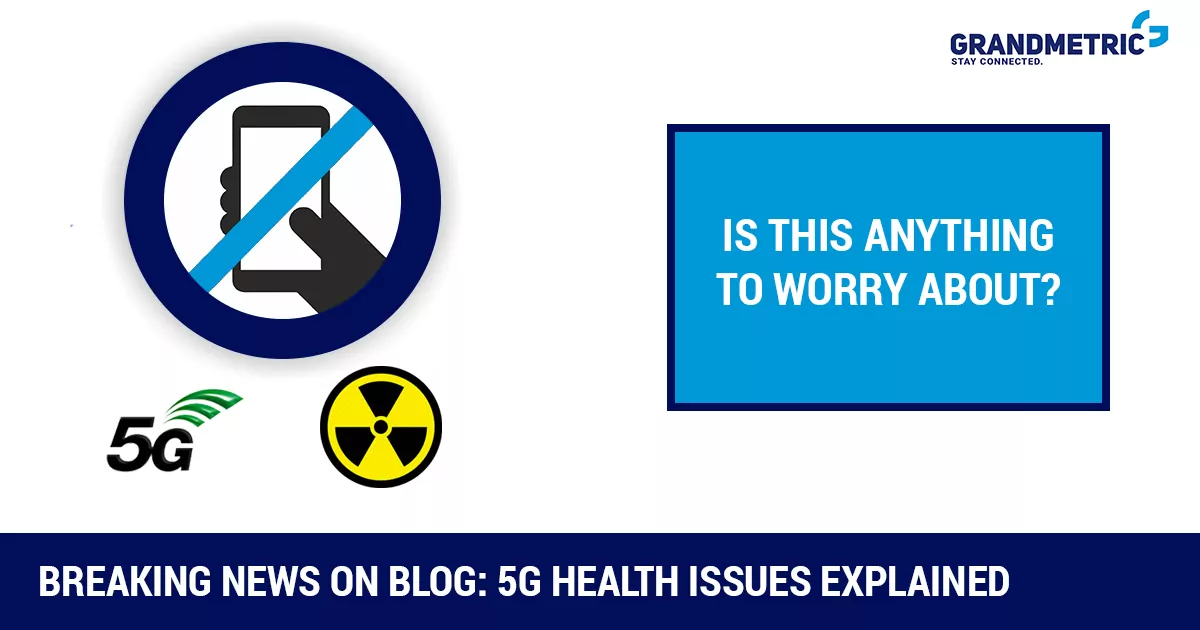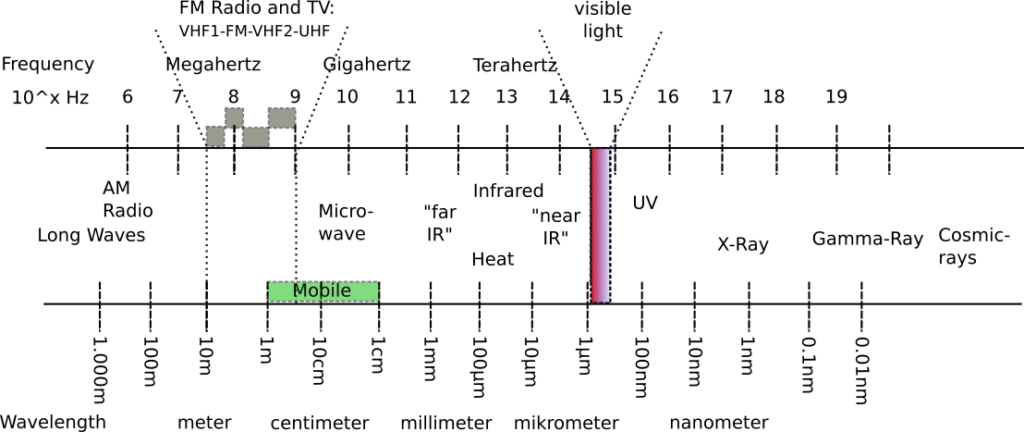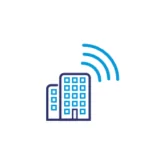
Introduction
In my previous post on possible health effects of radiation generated by mobile networks and mobile phones I have discussed a few fundamental facts about microwave radiation, and concluded:
- Microwave radiation absorbed from mobile network towers is negligible, compared to the radiation from handheld mobile phones.
- Microwave radiation levels of mobile phones have gone down since the start of digital mobile communication in the early 1990s by a factor of at least 10.
- The higher the density of base station transmitters in an area, the lower the total amount of microwave radiation emitted by the phones. This is due to the tight power control on the mobile phones exercised by base stations. (An everyday experience of all of us: the better you hear your conversation partner, the lower your voice volume).
I have concluded the blog post with the observation, that none of the negative health effects of mobile phone radiation predicted by fear-mongers and alarmists since more than 20 years have been observed. Despite the partly obsessive use of mobile phones, mainly by young people since the early 2000s. Still there are claims that certain “studies” have provided clear indications that mobile phones are causing cancer.
In this article I would like to get a little bit deeper into the possible effects of microwave radiation on substances, and on living tissues in particular.
No Free Radicals in living Cells from Mobile Phone Radiation
One of the frequent alarming claims is that microwave radiation from mobile phones create so-called free radicals in body cells, which are seen as major contributors to the development of cancer. Free radicals are molecules with charged free ends, which are very aggressive when they tend to bind themselves to other molecules in their neighborhood. In order to create a free radical, you need to break a chemical bond or kick an electron out of its “home” atom hull. The same is true when you want to break or change DNA. Let us have a quick look at electromagnetic radiation to understand if that could happen as a consequence of microwave radiation.
Since over 200 years electromagnetic radiation (represented by visible light as the most “visible” section of the spectrum) has been interpreted as a wave (Huygens) and as a stream of particles (Newton) at the same time. A century old controversy, which has only been resolved in the 1940s by Quantum Electrodynamics. For our considerations we continue to live with waves and photons; no need to dive into quantum worlds.
Figure 1 below shows a wide range of the huge electromagnetic spectrum. It starts at zero Hz (oscillations per second), and goes up to and above 1020 Hz. It includes AM and FM radio waves (~100 Mega-Hertz), microwaves (300 MHz to 300 GHz), visible light (1 PHz), X-Rays, Gamma-Rays and high energy cosmic rays. You can see the mobile telephony frequency range marked in green between 300 MHz and 300 GHz. Visible light (the red-blue colored bar) is shown for comparison.

Figure 1: Electromagnetic Spectrum.[1]
For an assessment of the capability of electromagnetic radiation to break a chemical bond, or to remove an electron we need to understand how much energy a single photon of the radiation actually has and compare it with the energy of the targeted chemical bonds. It is always a single photon that breaks a bond or kicks an electron out of its “orbit”.
The energy of the photons is calculated using Planck’s formula[2]. I have done this in the table below for a range of characteristic frequencies. For convenience I have expressed the energy in Joule (J) and in electron Volts (eV).
| Wave Frequency |
Photon Energy (in J) |
Photon Energy (in eV) |
|
| 300 MHz |
1.8 * 10-25 |
1.2*10-6 |
Lowest GSM frequency |
| 3 GHz |
1.8 * 10-24 |
1.2 * 10 -5 |
High LTE band |
| 30 GHz |
1.8 * 10-23 |
1.2 * 10-4 |
New Radio, 5G
|
| 3 THz |
1.8 * 10-21 |
1.2 * 10-2 |
Infrared |
| 600 THz |
3.6 * 10-19 |
2.4 |
Visible Light |
| 3 PHz |
1.8 * 10-18 |
12 |
UV radiation |
The energy of chemical bonds in organic molecules is between 3 and 5 eV[3]. Hydrogen bridges, which are important for three-dimensional structure of proteins, have a slightly lower energy of about 1 eV. The table very clearly tells you: Microwave radiation cannot have any impact on the chemistry of living tissues. There is no risk of degenerate cell chemistry from the use of mobile phones. To be clear: UV light and radiation of frequencies beyond do actually have the potential to impact our cell chemistry. That’s why we use sun screens and protect ourselves during X-ray.
Heating effects and SAR values explained
What else can happen? After all part of the radiation is absorbed by materials, including the phone owner’s tissues. Absorbing energy usually results in a heating effect. Heating through microwave is well known from microwave ovens. Water is particularly receptive to microwave radiation: H2O water molecules show an internal polarity which makes them each receive little quantities of the wave energy. As a consequence, the molecule starts moving faster, which is exactly what we sense and feel as heat. There is an abundant amount of water in your body tissue. Thus, if you cook a piece of meat in a microwave with 500W to 1000W, the protein will degenerate from the heat. On a side note, there is also a lot of water bound in concrete. That’s why concrete walls are shielding off microwave.
Heating can have disastrous effects. But we do already know that mobile phones generate very little amounts of radiation energy compared to the 500W of a microwave oven. For LTE smart phones the maximum allowed by the standards and by national regulations is 200mW, and this threshold will be valid for 5G, too. The typical transmission energy of a phone is much lower though, in particular when the phone is close to a base station. Technically it is still possible, that due to bad construction the phone antenna focusses part of its radiation energy on a tiny part of the user’s head. That is the reason for having the SAR thresholds. SAR stands for Specific Absorption Rate, and it measured in Watts per Kilogram. The allowed SAR is 2 (1.6 in the US). Measured SAR values for modern smart phones are as low as 0.6. With 200mW emitted by the phone, for example an SAR of 2 could mean that 10% of the energy goes into a 10 g part of the user’s head, mainly skin and tissue close to the skin. SAR is measured by a complex procedure in specialized labs. They are using models of human skulls, containing little cells filled with liquids, and are looking for the most heated parts[4].
Making a long story short: You can calculate what the effect of a half hour phone conversation with an SAR of 2 means for the impacted human tissue: Even if the tissue is not cooled by heat diffusion and heat transport through blood and body liquids, the maximum effect would be about 0.8 degree. And realistically we will end up in the range of 0.1 – 0.3 degrees. If we consider that as something dangerous, we should hide from sunshine, avoid hot bathtubs, and refrain from any sports. Some readers may remember that their ear or head skin was feeling hot after a long phone conversation. This effect is not due to radiation exposure, but entirely and solely due to the heat from screen and battery discharge, plus the shielding from air circulation by the phone body held closely to the head.
What is wrong with all these studies?
The topic of health and Electromagnetic Radiation and (Mobile) microwave in particular certainly belongs to the most studied items in medical research. I said “most studied“, and deliberately not meant “best studied“. Out of the well over 20,000 known studies of the topic very few deserve the recognition as serious scientific work. Many have been conducted ad hoc, using awkward study design and misusing statistical formulas. And most of the “lead studies“, which are cited by mobile phone opponents are at least 20 years old; but still being merged into the current discussion.
There are many different claims of health-adverse effects. To keep this post at a manageable length, I want to focus on the two most dramatic claims:
- „Short distance to cell phone towers increases cancer risk “
- „Using a mobile phone increases the risk of contracting cancer, in particular brain cancer “
There is simply no substance behind those claims. All the studies I have seen or read about so far share a number of critical flaws, which can be summarized under “bad study design “. That view is also shared by the vast majority of serious professional and scientific associations:
- No random selection of participants has taken place. In some cases, the study groups even consisted of volunteers — the big “No-No “of all statistics textbooks.
- Samples are mostly really small, often because many of these studies are carried out ad hoc and locally.
- Other major factors were usually completely ignored. In case of cancer, the number one driver is known to be participant age. Cancer researchers and epidemiologists insist on age-standardized data as an entry point to every study. Most studies report average age at best.
- Also smoking or drinking habits, or exposition to hazardous materials at work are generally being dealt with by stating that it can be assumed to be homogenous across the studied groups.
- The true exposition of participants to electromagnetic radiation during the study period has never been accurately measured. Since many of the studies are being conducted retroactively, it is quite impossible to estimate the correct exposure. The investigation would have to include other electromagnetic fields, such as from radio and TV towers (similar strength than mobile phone towers), digital cordless phones, and own use of mobile phones. It would have to consider building materials (concrete, brick, wood), which shield off electromagnetic waves differently. Most people stay inside most of the time.
For example, the well-known and frequently cited “Naila Study “, conducted in a small German town in 2004, covered the period 1994 -2004. The data were retroactively collected from the files of 5 local physicians. From a total of 34 incidents of cancer during the 10-year study period (that is a real small sample, if there ever was one) the authors concluded a risk increase by a factor of 2.3 between people who lived inside a radius of 400 m from the mobile phone tower and those outside. On average the incidence rate was on German average; in particular it was much lower than German average on the outside of the 400 m zone — a fact that was ignored. The most obvious explanation would be that not all cases were recorded. The German Society for Medical Science, Biometrics and Epidemiology dismissed this and any similar results completely, as early as 2005[5]. See also Rothman[6] for a much broader discussion.
A similar outcome was reported in a study conducted in Belo Horizonte, Brazil[7], often cited in publications by local initiatives across the world, too. Again, the only factor considered was proximity to the towers based on geo-data. No age structure was provided, no analysis of living or work conditions or social class of residents given. It has been shown that the authors included less than 1/3 of all cancer deaths in the municipality in their study. The highest number of cancer deaths and highest population density was recorded within a circle of just 100m of “towers”. In fact those towers were high-rising buildings with antenna masts on top – a scenario where it is known that those residents directly under the antenna basically have no exposition at all. This study was dismissed as a “weak study” in a review by the well-known epidemiologists Foster and Trottier in the same journal[8].
In contrast the most careful and well-crafted study so far, Interphone, was conducted by the International Agency for Research on Cancer (IARC), a WHO organization. This study analyzed well over 5,000 cancer cases worldwide, and concludes: “To date, research does not suggest any consistent evidence of adverse health effects from exposure to radio-frequency fields at levels below those that cause tissue heating[9].” This view is also shared by the American Cancer Society[10] and the Scientific Committee on Emerging and Newly Identified Health Risks (SCENIHR)[11]. One of the largest studies was conducted in Denmark with over 400,000 participants over a long period from 1982 to 2007 (basically all Danish mobile phone network subscribers, except company contracts, where the individual user could not be clearly identified). No increased risk of brain tumors from mobile phone use could be seen.
There are issues with even the most meticulous studies, but in contrast to the self-assured local activists the serious researchers identify and discuss them. In Interphone, the top 10% extremely high users showed a slight increase of cancer rates. The researchers do not consider this as a real risk though; they rather see a distorted reporting of mobile phone use by the affected study participants and suggest further research in this area. The classification of mobile phone radiation in class 2b by the IARC is due to this one issue. In the Danish study the exclusion of all company phones is listed as a weakness, although not a strong one.
Conclusion
We are discussing the possible effects of electromagnetic radiation on living tissues and in particular humans. In a previous post we had demonstrated the well-known fact that the exposure of individual phone users to electromagnetic radiation comes from their own mobile phone, and not from network base stations (“towers”). The photon energy of electromagnetic radiation in the microwave spectrum, such as used for the communication to and from phones, is by at least 5 orders of magnitude (1/100,000) too low to cause any harm in living cells. The only possible impact is a heating effect. Microwave ovens illustrate this effect, but the energy applied by a mobile phone is at least 10,000 times lower and can heat human tissues by less than half a degree at most. Specific absorption rate (SAR) thresholds for mobile phones limit the heating of cellular tissues. In the third part of this post we discuss very briefly the situation around studies of health risks connected to mobile phone usage. Alarmistic studies are very often conducted by local initiatives, and we give examples and arguments why they should not be taken into account. Serious broad studies show very clearly, that mobile network towers and mobile phone usage have no adverse effects on health.
References
[1] Created by the author using input data and a formatting idea from Wikipedia: https://commons.wikimedia.org/wiki/File:Electromagnetic-Spectrum.png
[2] Planck’s formula was the starting point of quantum physics, and there has never been a reason to change it. It states that the energy of a single photon of frequency f is hf, with Planck’s constant h=6.626 × 10-34 Js. Energy is measured in Joule (J) or – in nuclear physics – often in electron Volts (eV).
[3] https://en.wikipedia.org/wiki/Bond_energy
[4] According to the standardized procedure the phone is transmitting at with maximum power during those measurements. The German magazine Connect regularly measures a modified SAR under more realistic field conditions. The top group of their results is well below 0.5W/kg, with an average of less than 1W/kg, compared to the 2W/kg from standardized procedure.
( see https://www.connect.de/vergleich/strahlungsarme-handys-bestenliste-1500639.html)
[5] M. Meyer, A. Gärtig-Daugs, M. Radspiel-Träger, Krebsinzidenz im Umkreis von Mobilfunkbasisstationen. Electronic Version: www.egms.de/en/meetings/gmds2005/05gmds119.shtml.
[6] Rothman, K.J., Epidemiological evidence on health risks of cellular telephones. Lancet 2000; 356; 1837 – 1840.
[7] A. Dode et al. Mortality by neoplasia and cellular telephone base stations in the Belo Horizonte municipality, Minas Gerais state, Brazil. Science of the total environment 409(19), 3649 – 3665, 2011.
[8] Foster, KR, Trottier, L. Comments on „;Mortality by neoplasia and cellular telephone base stations in the Belo Horizonte municipality, Minas Gerais state, Brazil…” Sci Total Environment (2012), doi: 10.1016/j.scitotenv.2012.06.007.
[9] Reference: https://www.who.int/en/news-room/fact-sheets/detail/electromagnetic-fields-and-public-health-mobile-phones. Also available as pdf download from the same web page.
[10] American Cancer Society: Cellular Phones. http://www.cancer.org/Cancer/CancerCauses/OtherCarcinogens/AtHome/cellular-phones . Many other results are listed on this page.
[11] European Commission. Health Effects of Exposure to EMF. An impressive 80 pages document to be found under the European Commission web site: http://ec.europa.eu/health/ph_risk/committees/04_scenihr/docs/scenihr_o_022.pdf







